Tablemaker offers a wide variety of ways to customise tables, from size and shape to leg colour and edge profile.
Whether you are an interior designer, architect, project manager or inspired homeowner, we are here to help our creative customers realise a table to match their vision.
Visualising your creative custom ideas
In many of our custom projects, computer aided design (CAD) is used to bring a concept to life and consider every aspect, from size and shape to colour and corner styles.
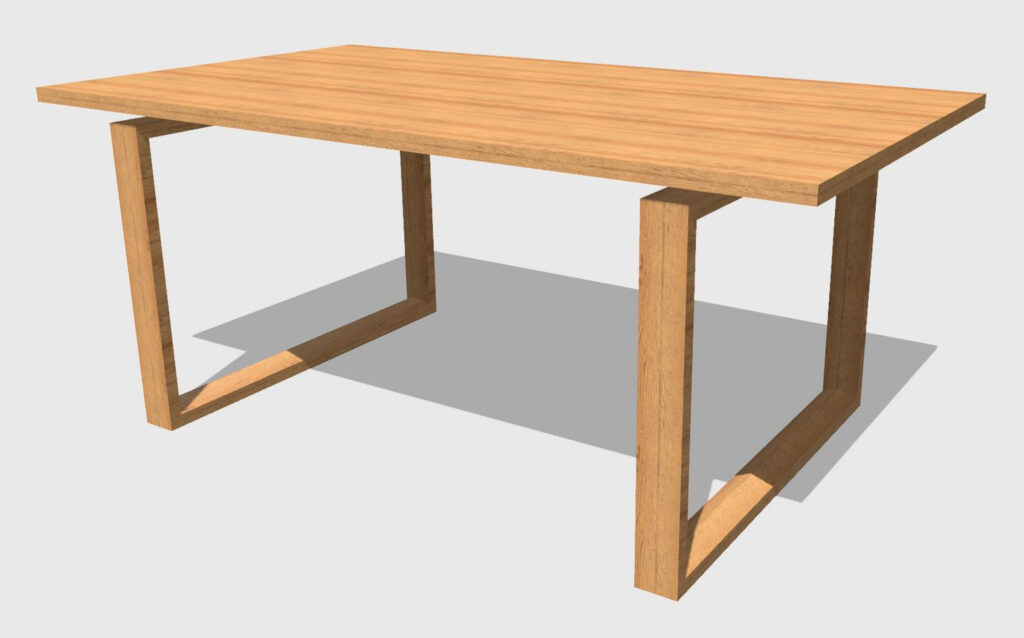

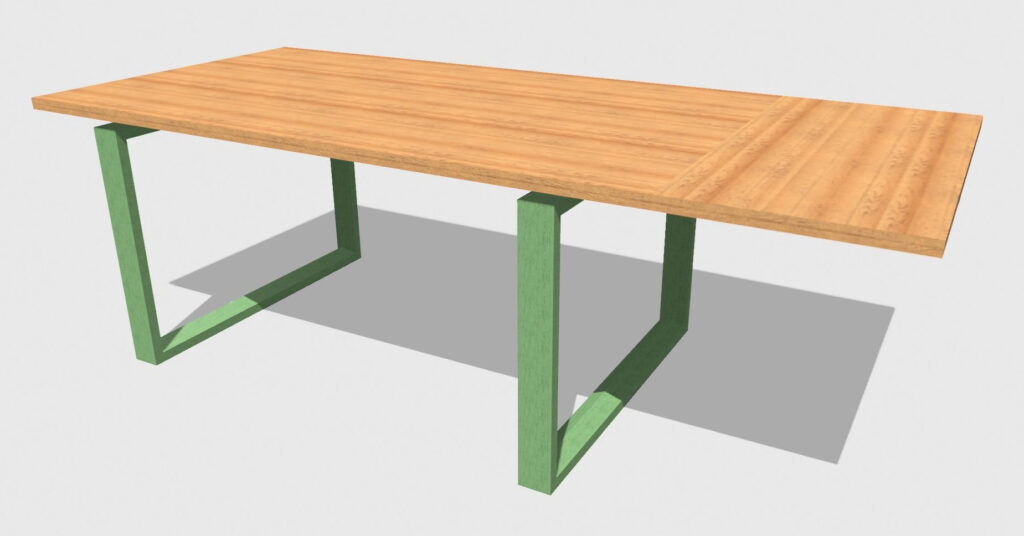
Before any design can be drawn up, we need to hear from you about what makes your ideal style. We hope this guide is a useful starting point in helping you understand the many ways you can customise your Tablemaker project.
Once you have idea of how you might want to customise, have a look at our range of original table designs. Choose the table you like the best and then click the ‘Customise’ button to send us details of the changes you want to make. We will get in touch to discuss the options, cost and next steps.
Design the perfect table for your project with these 20 creative customisation ideas
1. Length/width
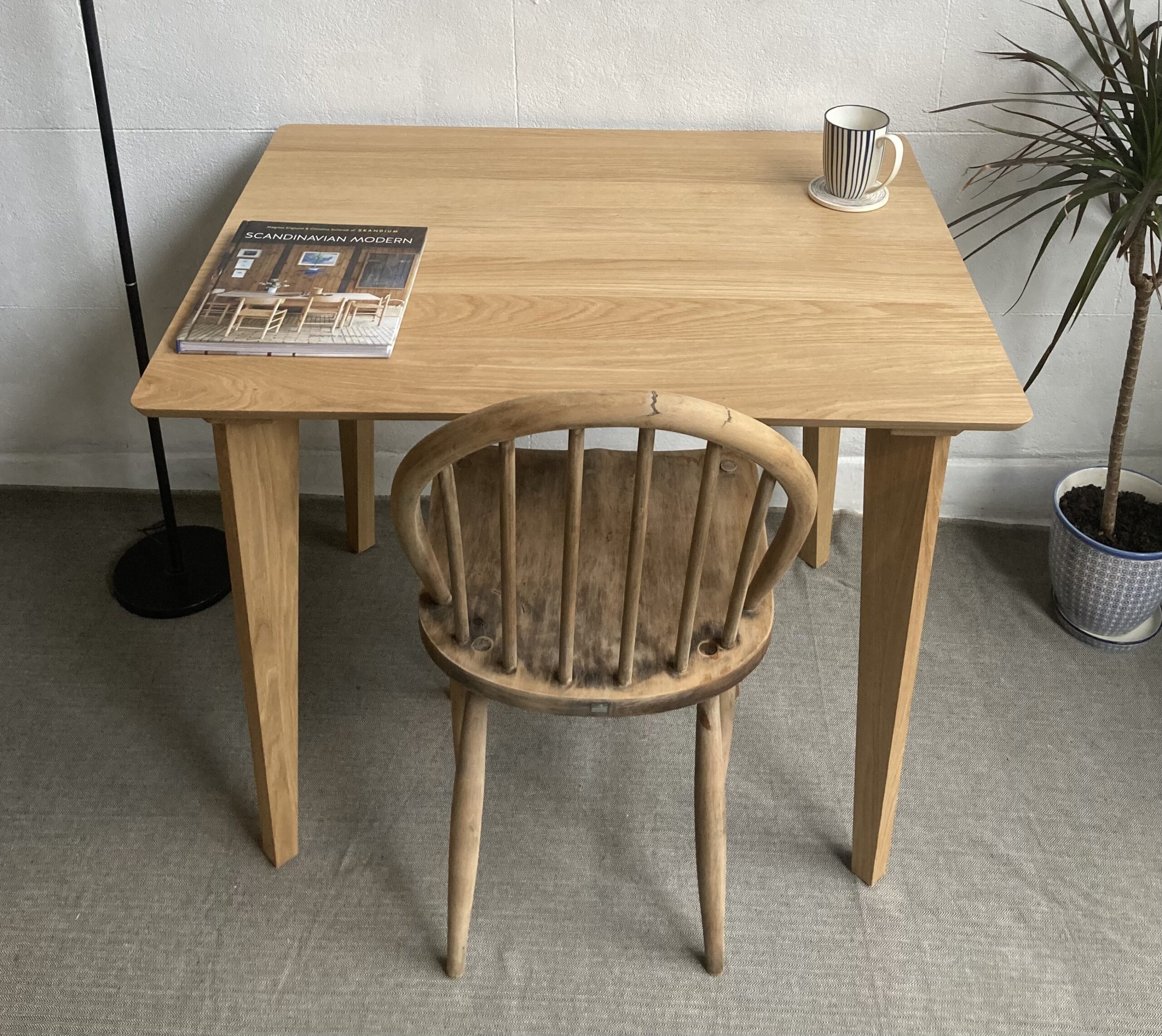
The most popular customisation we are asked for is to a table’s key dimensions – its length and width. Most tables available from major retailers come in a narrow selection of sizes. The customer is expected to choose the closest one to suit the space. Not any more! We make every table to order and offer widths and lengths in 1cm increments.
When Tablemaker first opened in 2020 we had a range of set sizes but soon realised that as well as beautiful, modern designs, the option to make a table to an exact size was an appealing offer. Just tell us what size works best for you and leave the rest to us.
2. Height
There is no such thing as the ‘right’ height for a table. It all depends on who is using it and for what purpose. A typical range for a dining table or desk height is 73-76cm. A standard coffee table height is 30-45cm. At Tablemaker, our default height for a dining table/desk is 74cm and our coffee tables vary from 38cm to 41cm.
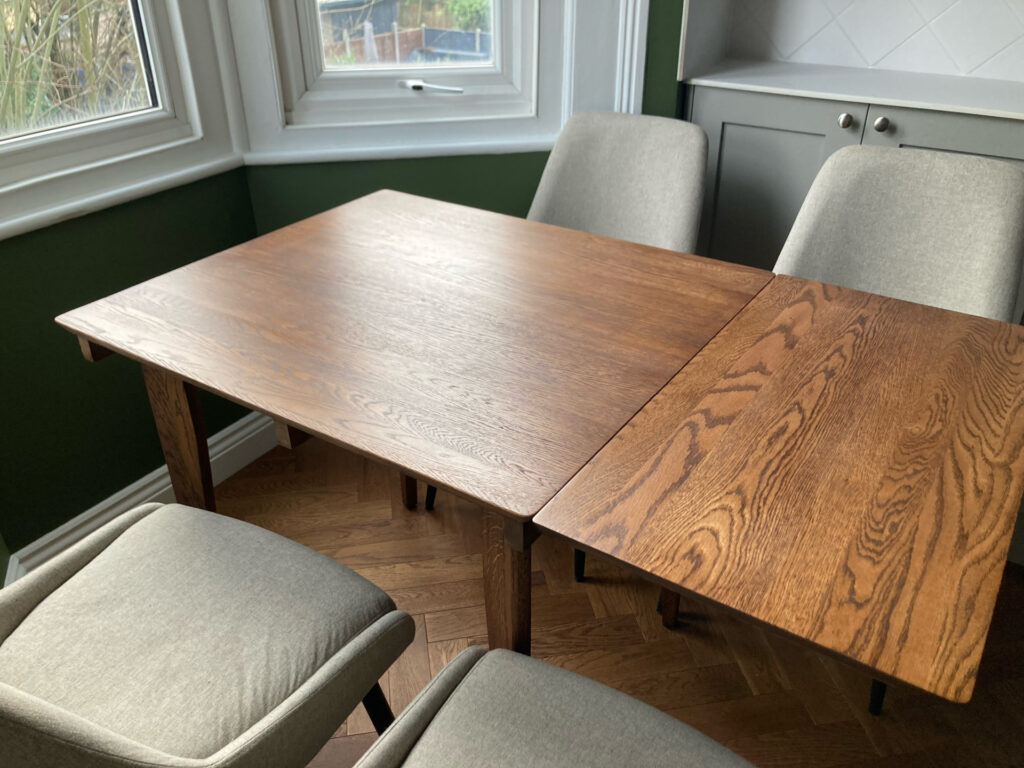
There are instances, however, when customers request something that is outside the typical range, and we are happy to oblige whenever we can. One customer was on the shorter end of the height spectrum and she requested we make her a desk that was lower that usual – around 70cm. Conversely, we had dining table customer who was especially tall so we made him a table 78cm high. We understand that the ‘right’ height is the one that works for you.
3. Top colour
The majority of our collection of tables are finished in a clear hardwax oil which protects and enriches the natural surface of the wood. In addition to a clear finish, we offer some tables in a dark and a ‘warm’ (orangey/light brown) tint because we felt it better suits the style of the piece.
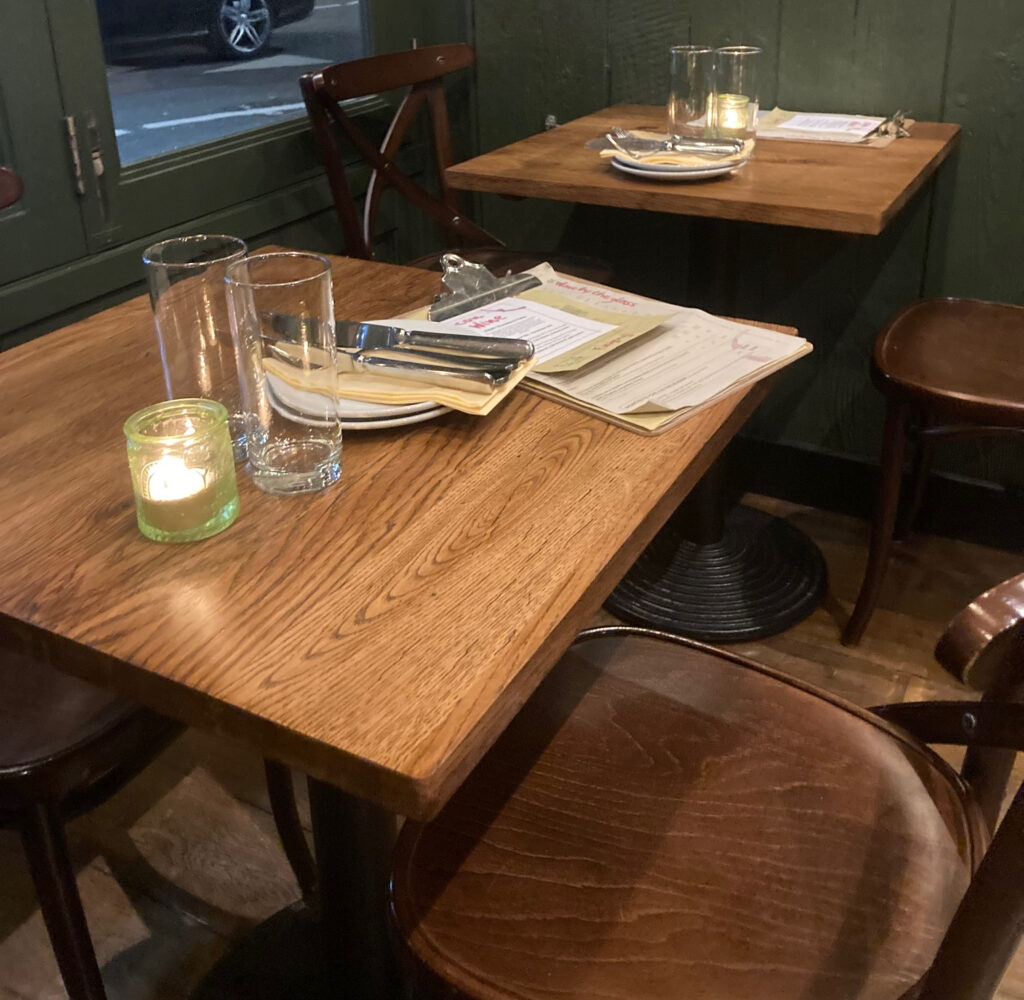
Sometimes a customer has the idea for a different tint entirely and we can work with them to test and select an alternative tone. Samples of clear, dark and warm are available as either colour swatches or solid oak pieces. If you have a different shade in mind, get in touch and we will discuss the next steps.
4. Leg colour
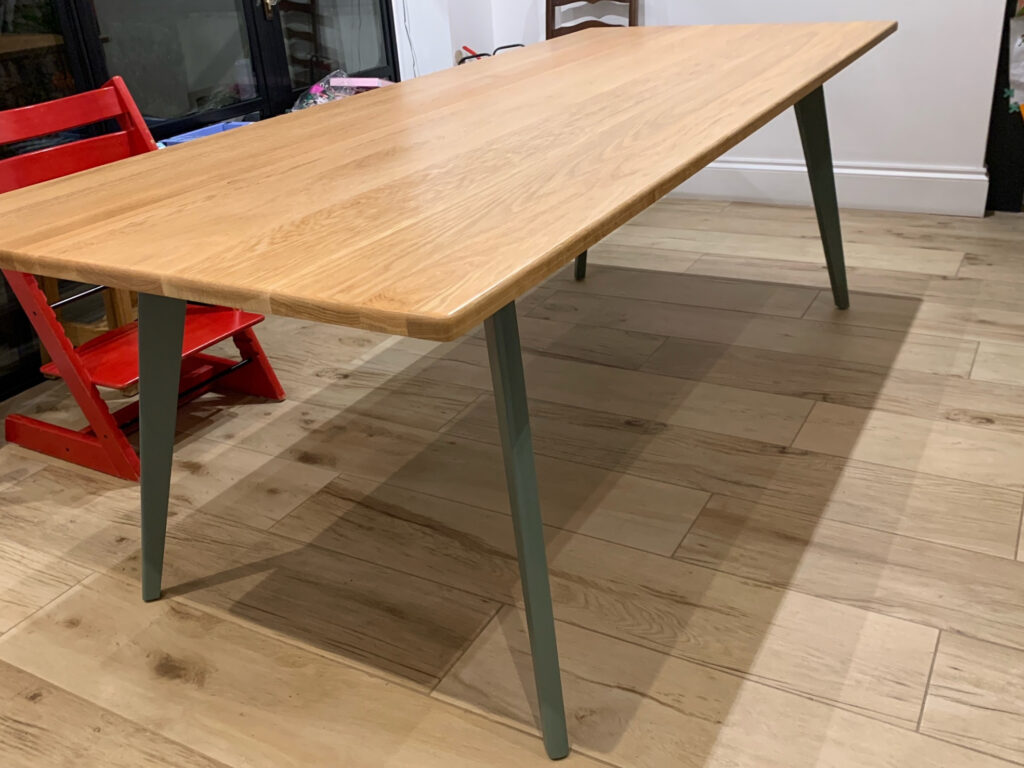
Adding a contrasting colour to a table’s legs is one of the most effective ways to harmonise it with a decor scheme. We are happy to work with you in altering the leg colour so it suits your style. Either we can paint them or use a wood stain, depending on your preferred shade, the leg material and factors such as – in the case of wooden legs – how much of the grain the customer wants to see coming through. We have a stock of around 20 spray paint tones, but we also offer RAL colours or your favourite shade from popular companies like Farrow and Ball or Little Greene.
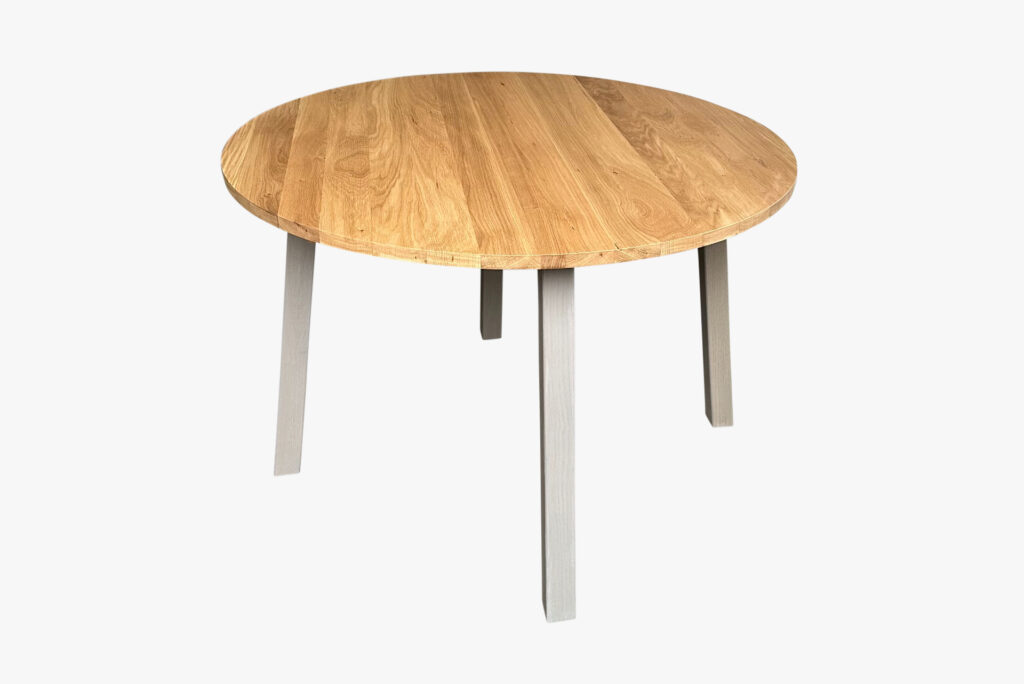
Another option that some customers have taken is for us to supply the legs completely without finish but sanded/prepared and ready to be painted by them or their decorator.
5. Finish type
Closely linked to colour is the type of finish used to both protect and and enhance the appearance of tables. Our standard finish for tops is a hardwax oil, either clear or tinted. Legs are typically finished in either a hardwax oil to match the top or, in the case of a stained leg, a clear water-based varnish (painted legs do not usually require an additional finish).
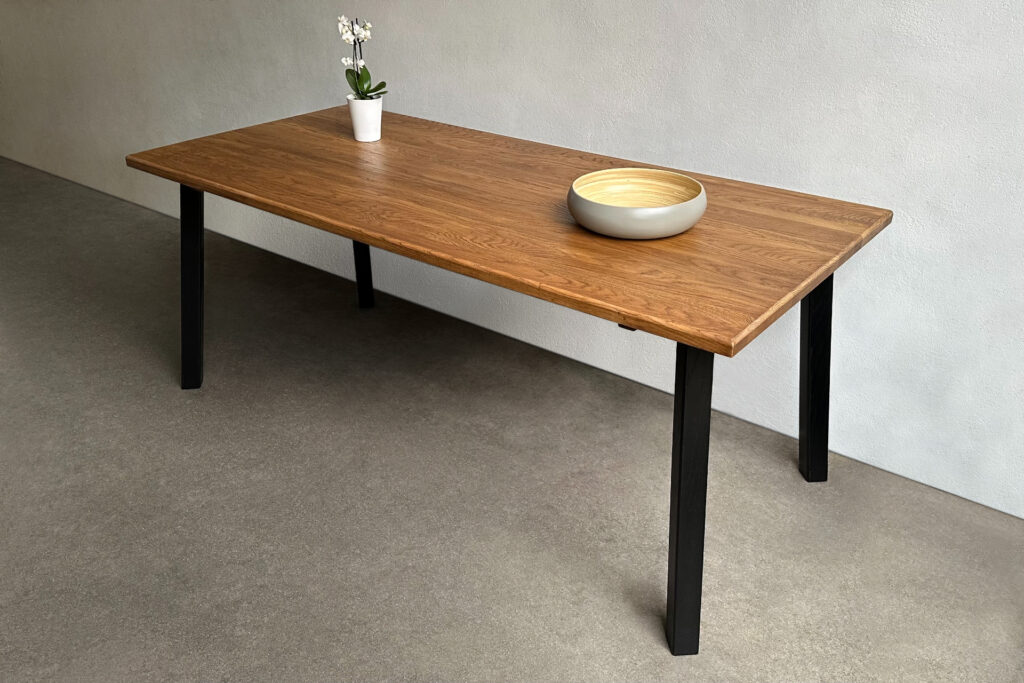
Whether it is a hardwax oil or varnish, we choose a satin finish by default as we believe it provides enough sheen for a high quality, natural appearance without being overly reflective or ‘plastic’ looking as some gloss finishes can. However, we are always willing to discuss other options should a more gloss or matt look be what the project requires.
6. Shape
Surely nothing instantly defines the style of a table more than its shape. For most customers, a standard rectangle or round top is ideal and it is the shape and position of the legs that adds ‘personality’. For others, that simply isn’t enough – they want to see a table with curves, angles and a whole host of other individual features that will make their piece unique.
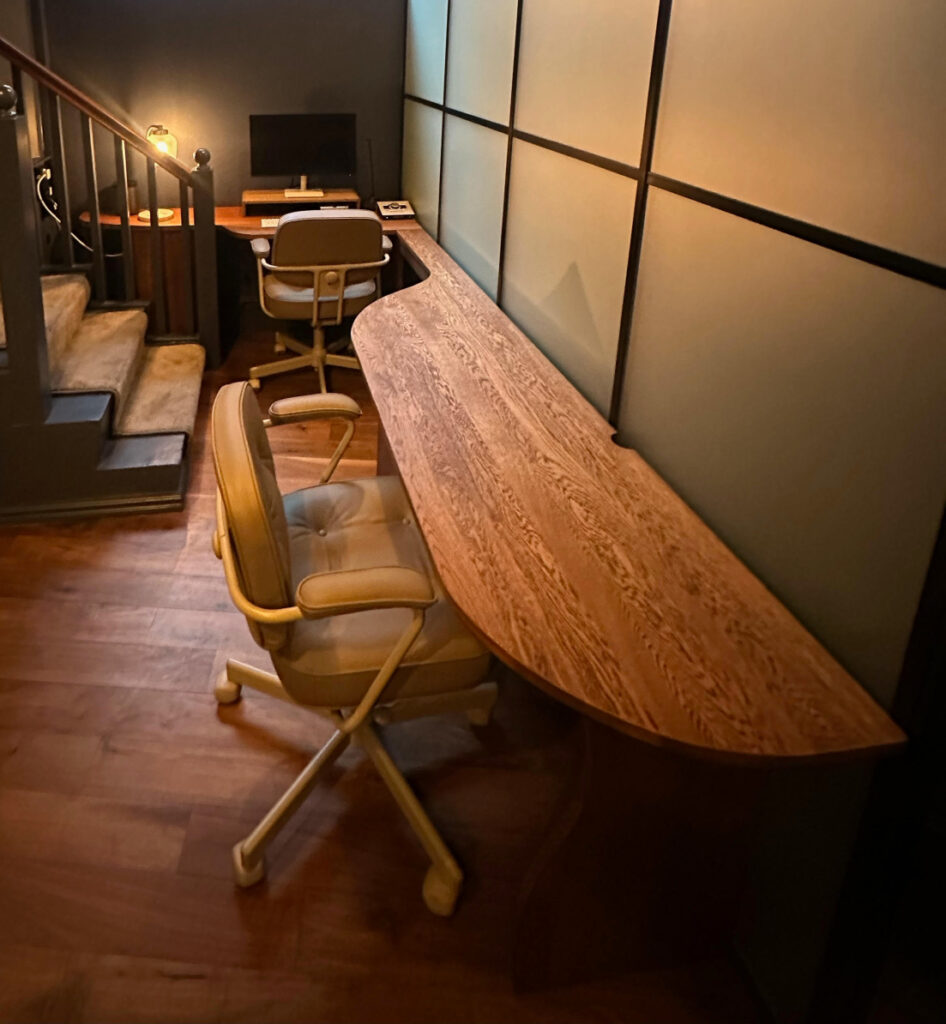
If there is a particular shape – for the top, legs or both – that you would like us to create then please let us know – we will do our best to accommodate any realistically achievable design. You can upload a sketch of photos of the shape you like via one of our contact forms and we will take it from there.
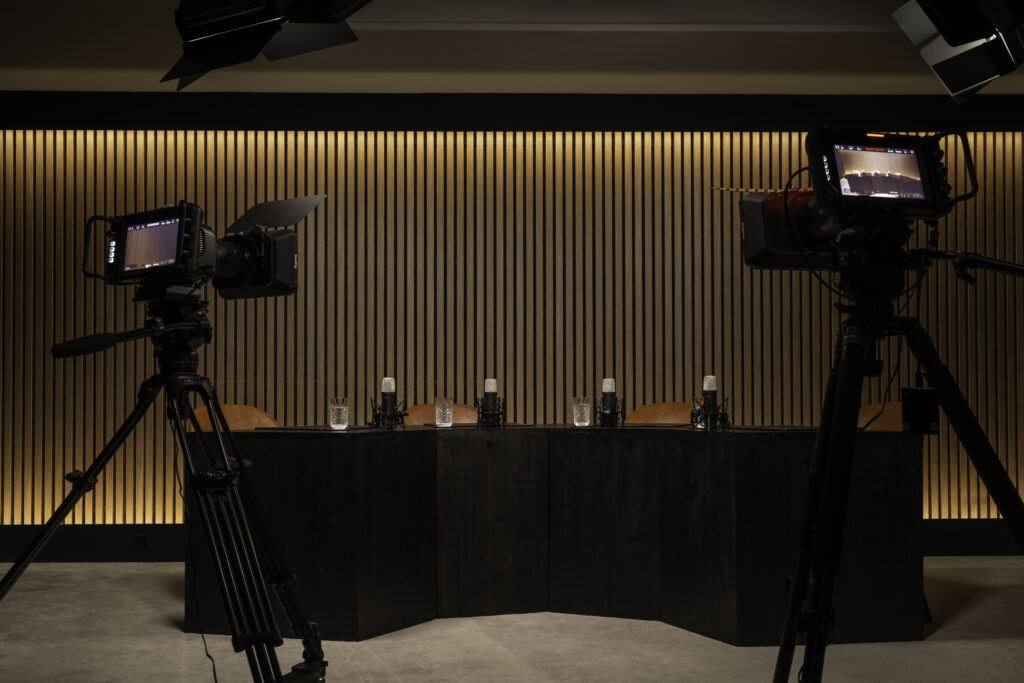
7. Top thickness
When it comes to solid oak (our main material), the two standard thicknesses are 24mm and 30mm. The former provides a sleek aesthetic appeal in the Scandinavian tradition, the latter can add gravitas for a more substantial feel. Those are the main material stock sizes, and therefore the most cost effective to choose, but we realise that on some occasions a different thickness is needed, perhaps when an existing table is being extended, or simply because that is the customer’s preference.
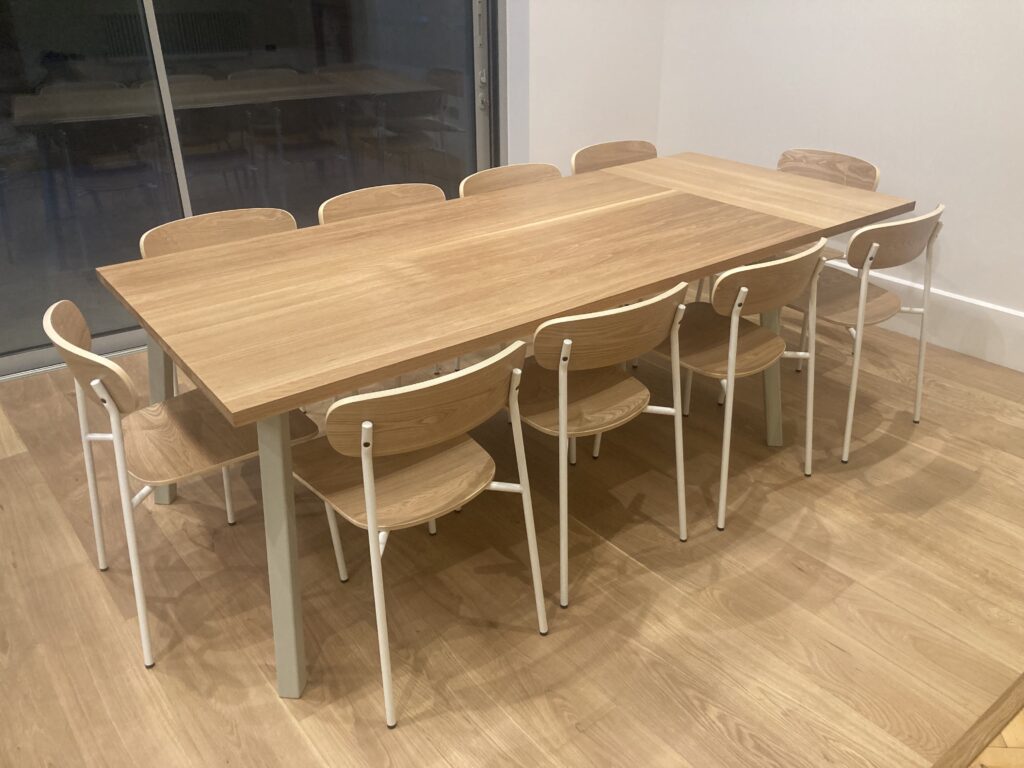
On a rectangular table we can usually achieve the appearance of any thickness up to around 50mm by adding a false edge using a method so seamless it would be almost impossible to differentiate from solid material unless looking underneath. For round tables the solution is more time-intensive but we will be happy to quote and deliver the ideal table whenever we can.
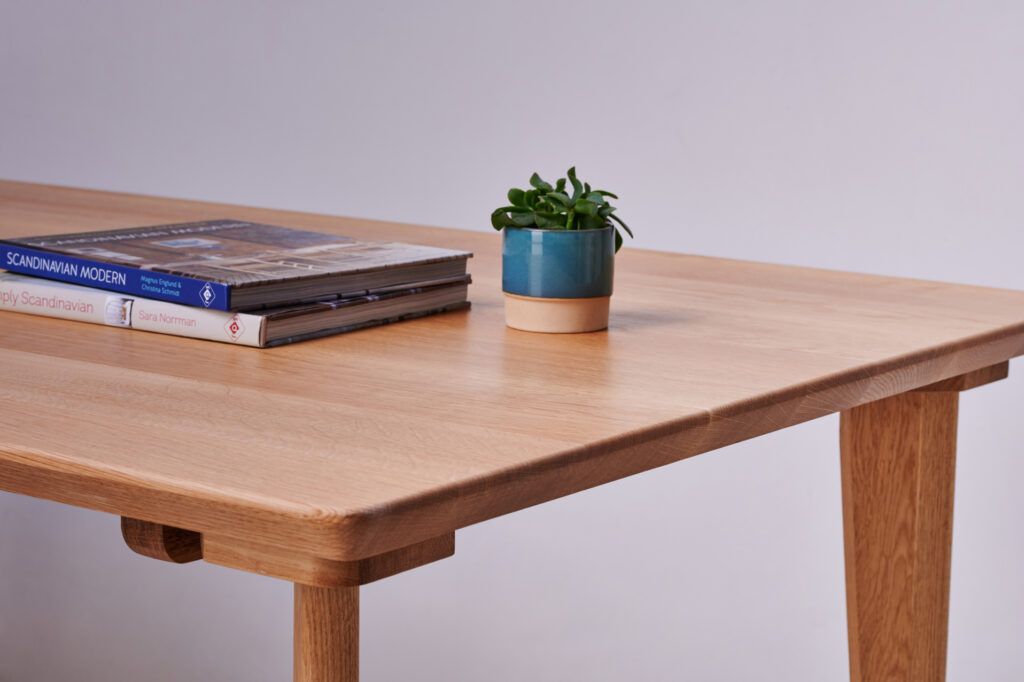
8. Wood type
Most of the tables we make are in solid oak as this popular, premium material offers a great combination of beauty and hardness. However, there are occasions when a different specie may be what is needed to suit a particular space, for example when there is existing furniture in that material.
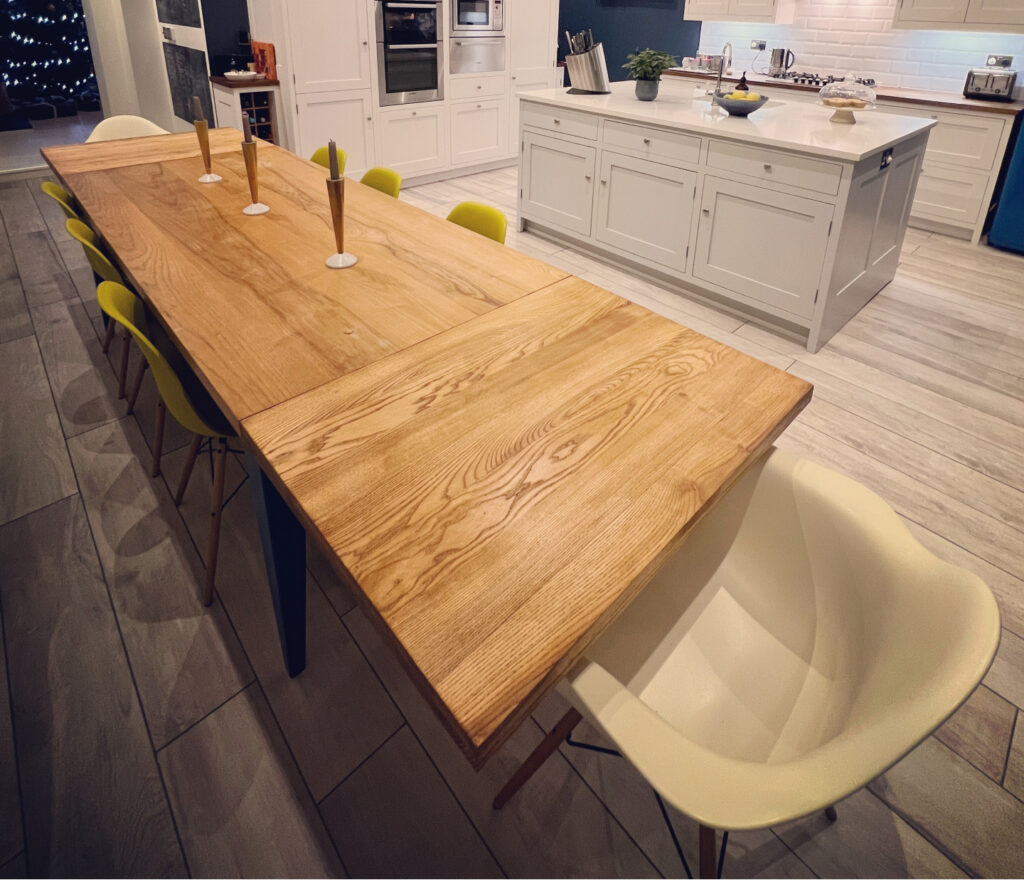
We have access to many high quality hardwoods including walnut, ash and beech plus pine, our preferred softwood, which can be in knotty or knotless grades.
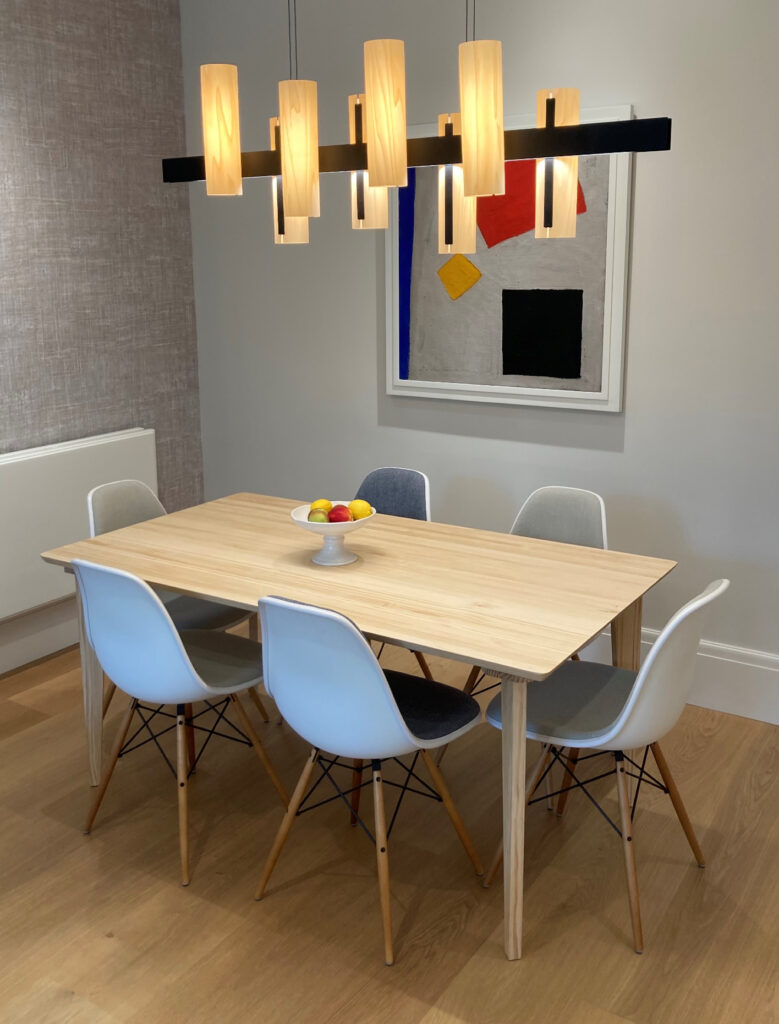
9. Edge profile
Each of our designs has its specific default edge profile but these can be altered to suit our customers’ preference. For example, you might like the style of ATO 55 but prefer a square edge over the bevel. Alternatively, the overall look of Element 57 may appeal but you could decide a large rounded edge would suit your home more than the default square.
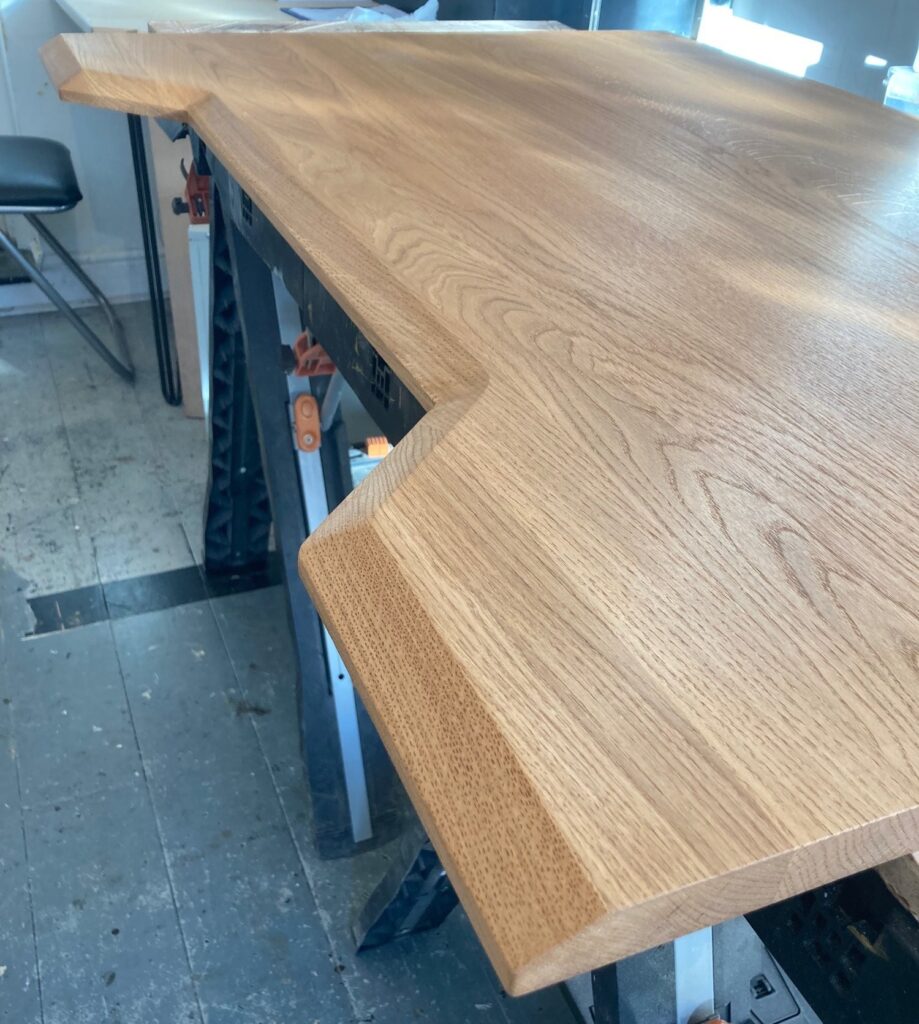
Edge profiles are generally interchangeable, just let us know what style you like and we can adapt the table top accordingly. As a guide, the most common edge profiles are square, bevelled and rounded (various radius options), but there are lots more including waney/live edge, sloping, chamfered and so on. Once you have described the edge profile you want, we can agree the specification and start to make your table a reality.
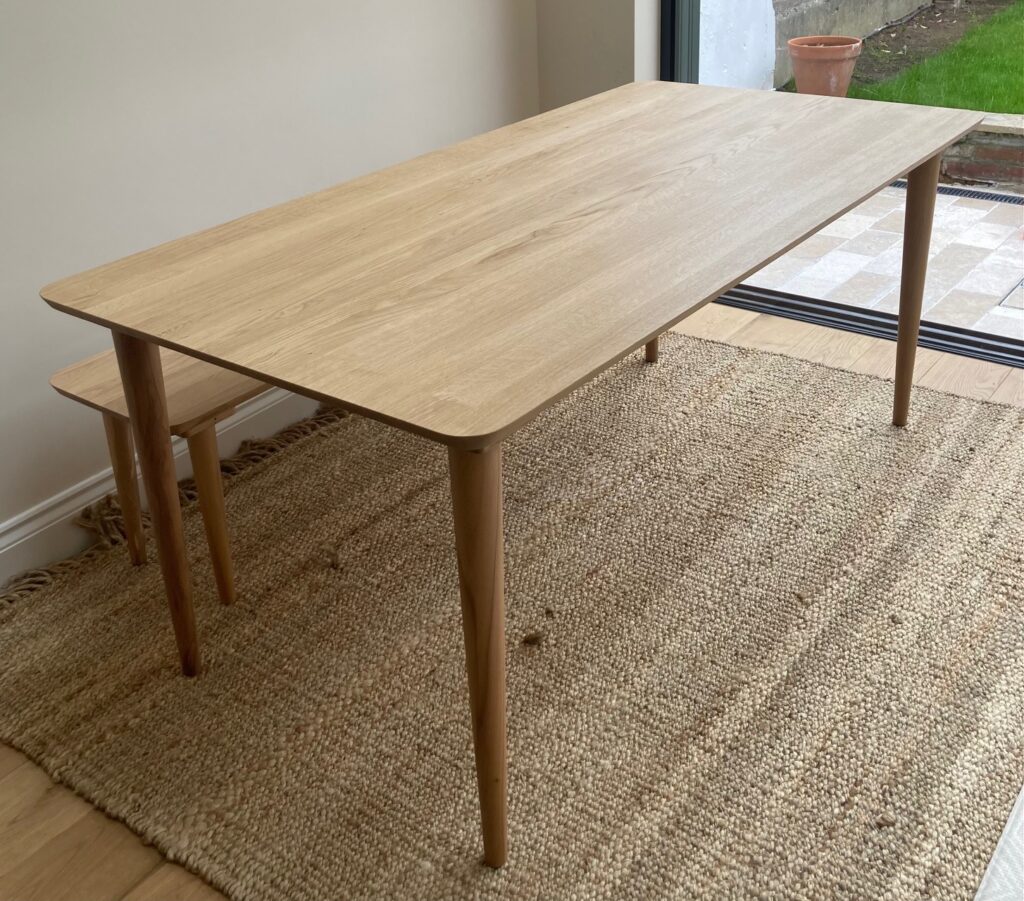
10. Corners
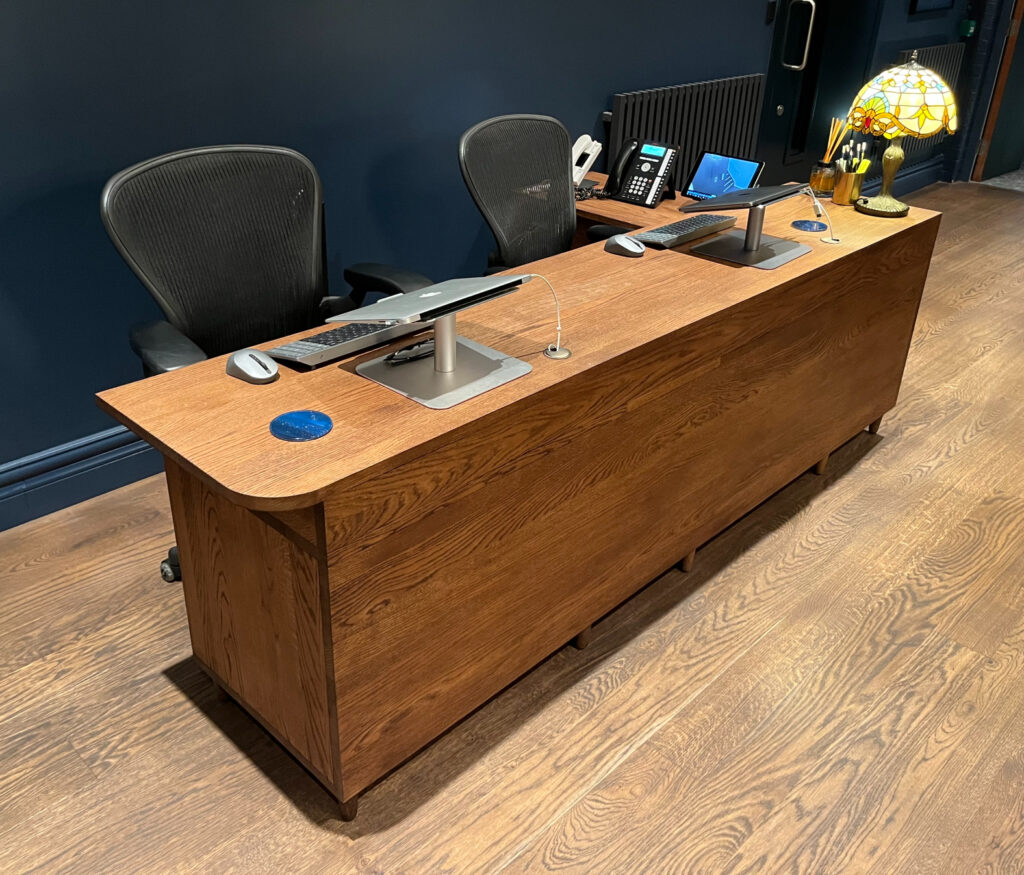
Along with edge profile, the corner shape has a big impact on the overall design. Most of our table designs have either a square (90 degrees) corner or a rounding, known as a radius. The size of the radius is usually between 10mm and 25mm, but this can be altered according to taste.
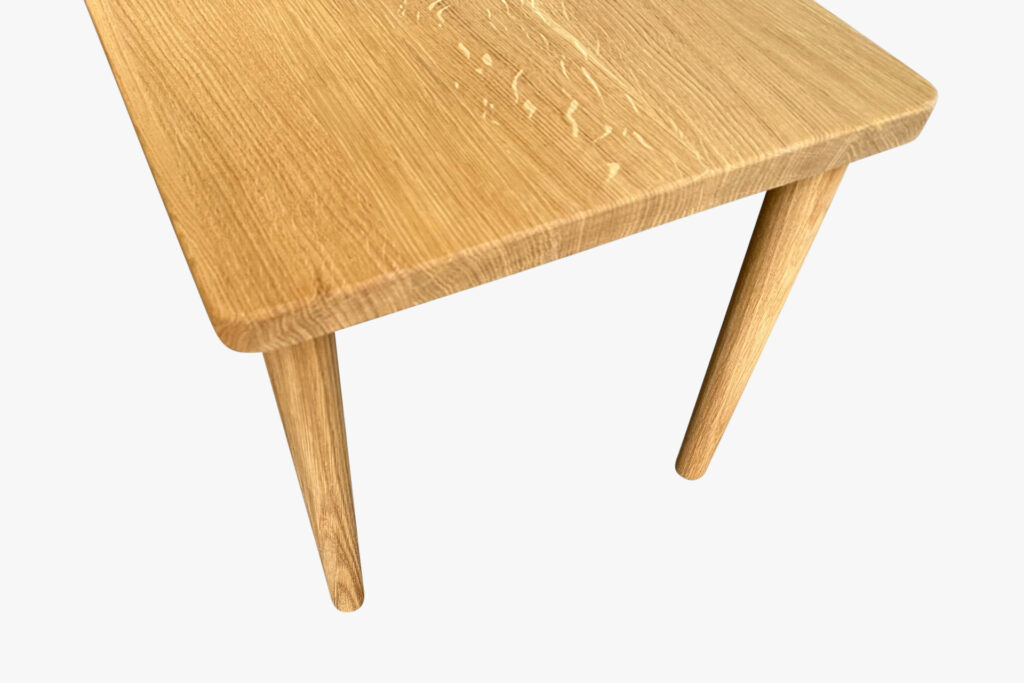
Adding a radius can give an organic sense to a design, as well softening the impact in case you bump in the corners! Sometimes a design calls for the table to have square corners and that is always an option with any of our tables, although it’s worth noting that we do slightly ease them to lessen the sharpness.
11. Cable holes
Adding small details can make the difference between something good but generic and a truly unique bespoke piece. For desks and office meeting room tables, having cable management solutions that are customised can be a very positive addition.
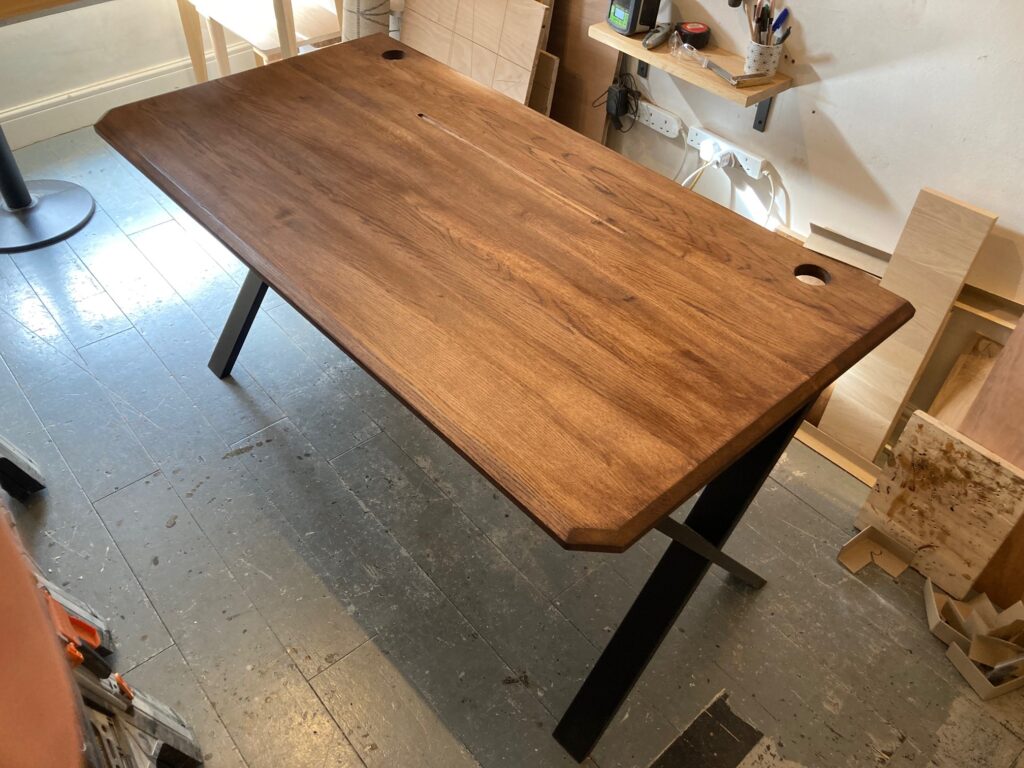
There are several ways to implement cable holes in a desk. Our standard desks come with the option of adding a small notch in the back central position, but this may not be ideal for all cases. You can request cable holes in any practical size and position (a 60mm diameter hole for plugs is common). We can also make holes to suit in-desk power sockets and other accessories you may wish to install.
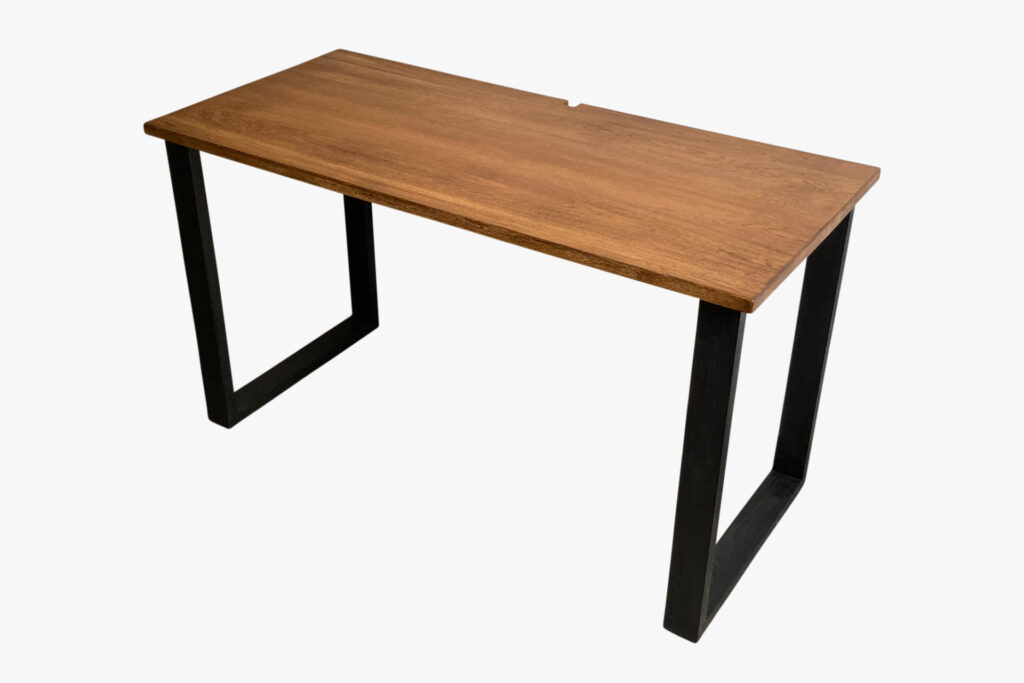
12. Extension leaf
Adding an extension leaf – or two leaves – is a great option when more seating places are needed on occasion. We can make extensions that use our own manually operated rail system. The leaf is always the same width as the table it is made for and can be any depth up to 50cm. Therefore, with a leaf at each end, the maximum we can extend a table by is 100cm. On some tables, leaves can be stored underneath, but this depends on the dimensions. Please note, if built-in storage is not practical due to the size of the top or position of the legs, the customer will have to store elsewhere.
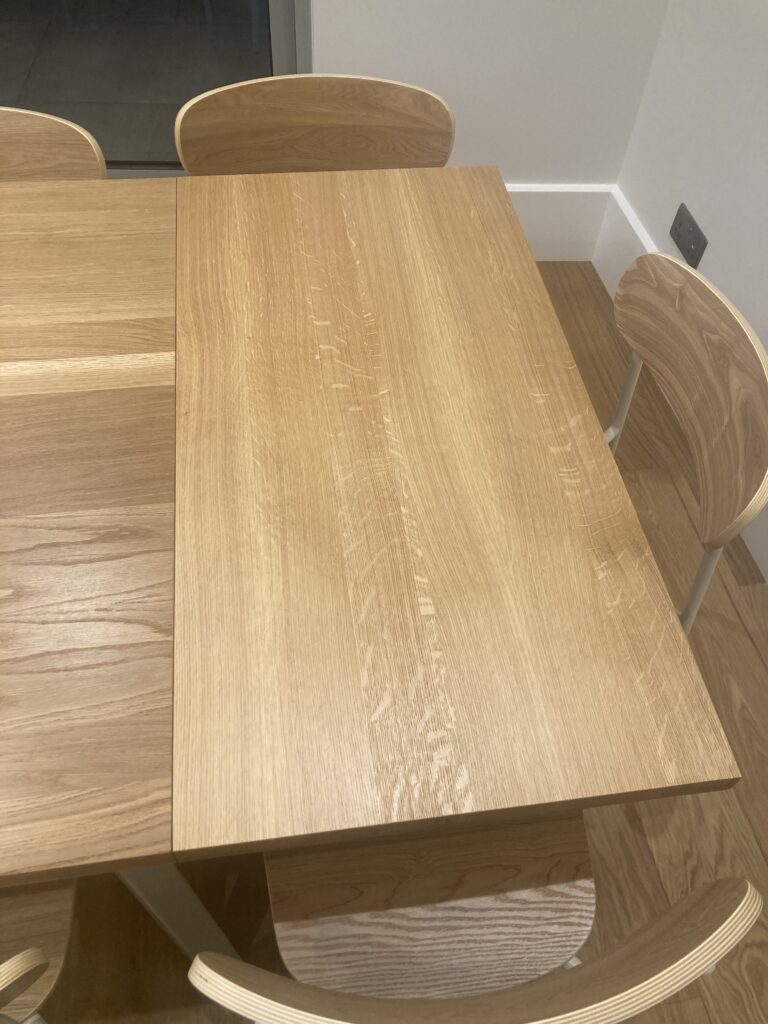
It’s not only new tables that can be made extendable – if the construction allows for it, we can add a leaf or leaves to an existing table. As with all of our custom services, we will always work with you to find the best solution.
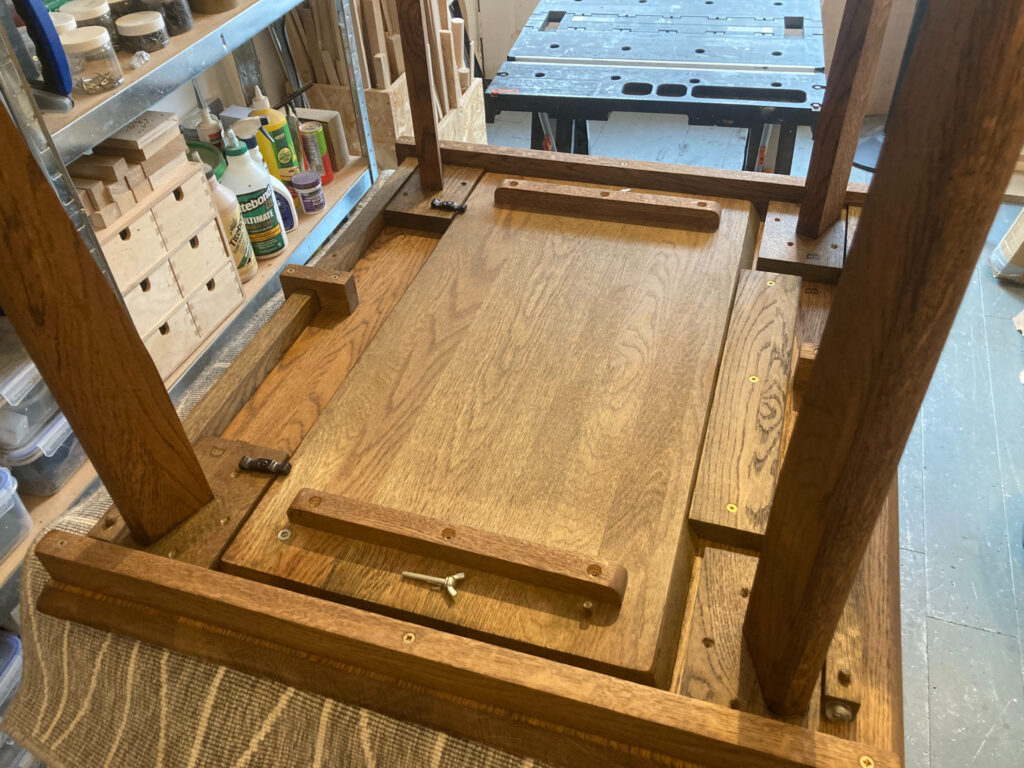
13. Restoration
Customisation isn’t always about a getting a new table how you want it – restoring existing tables to their former glory can be a valuable service. If you have a table that has seen better days then let us know what you would like us to do. You can send in a photo via email or one of our customisation forms.
A common form of restoration work we do is to sand back the surface of a solid wood table to remove years of stains, scratches and even burn marks. It is more complicated to sand a veneered surface, and in those cases we can discuss other options, such as using chemicals or even adding a new veneer if necessary.
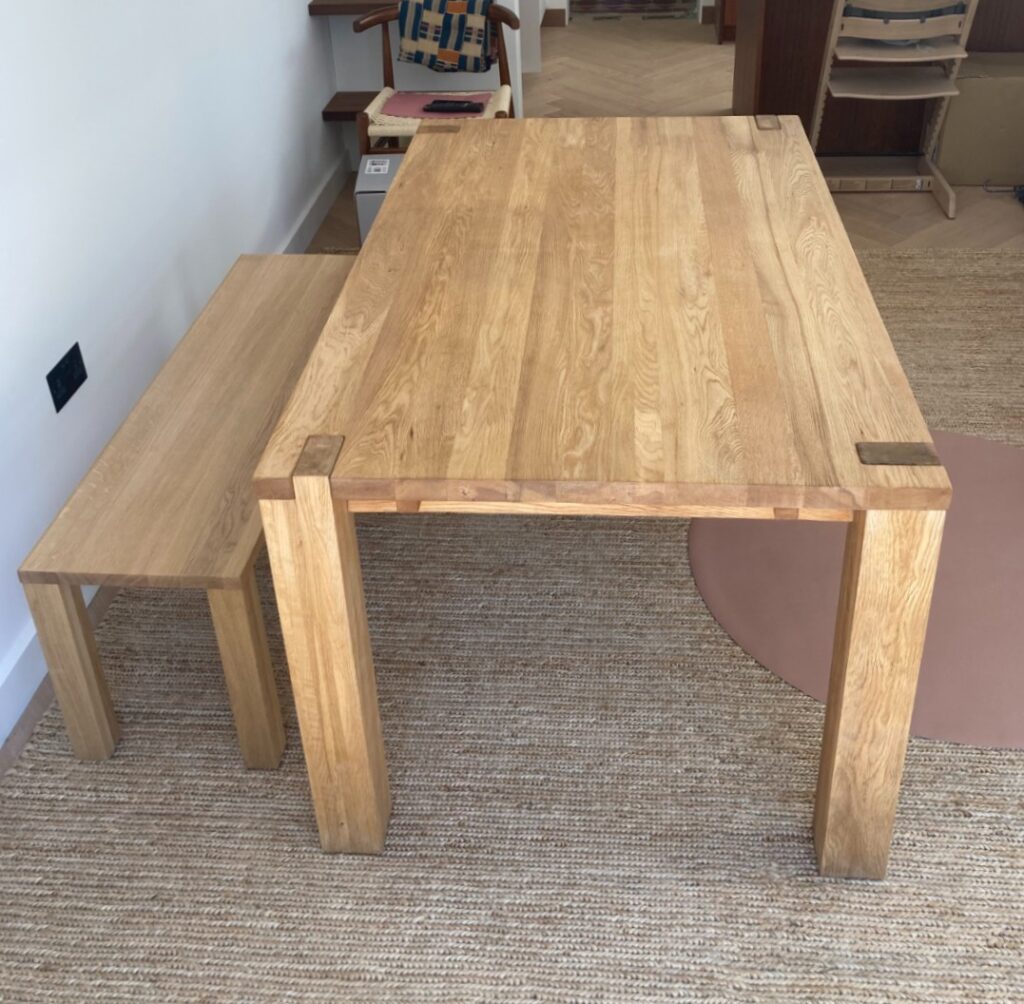
14. Resizing
Most of the customisation requests we receive are about changing the size of a new table, whether it’s length, width, height or a combination – but that is not where the service ends. We often get asked if we can resize customers’ existing tables.
The complexity of the work depends heavily on how the table was constructed and the material it was made from. The most time-efficient table resizing projects involve solid wood pieces with uncomplicated leg designs. However, we can usually work out a way to resize even the most complex of tables.
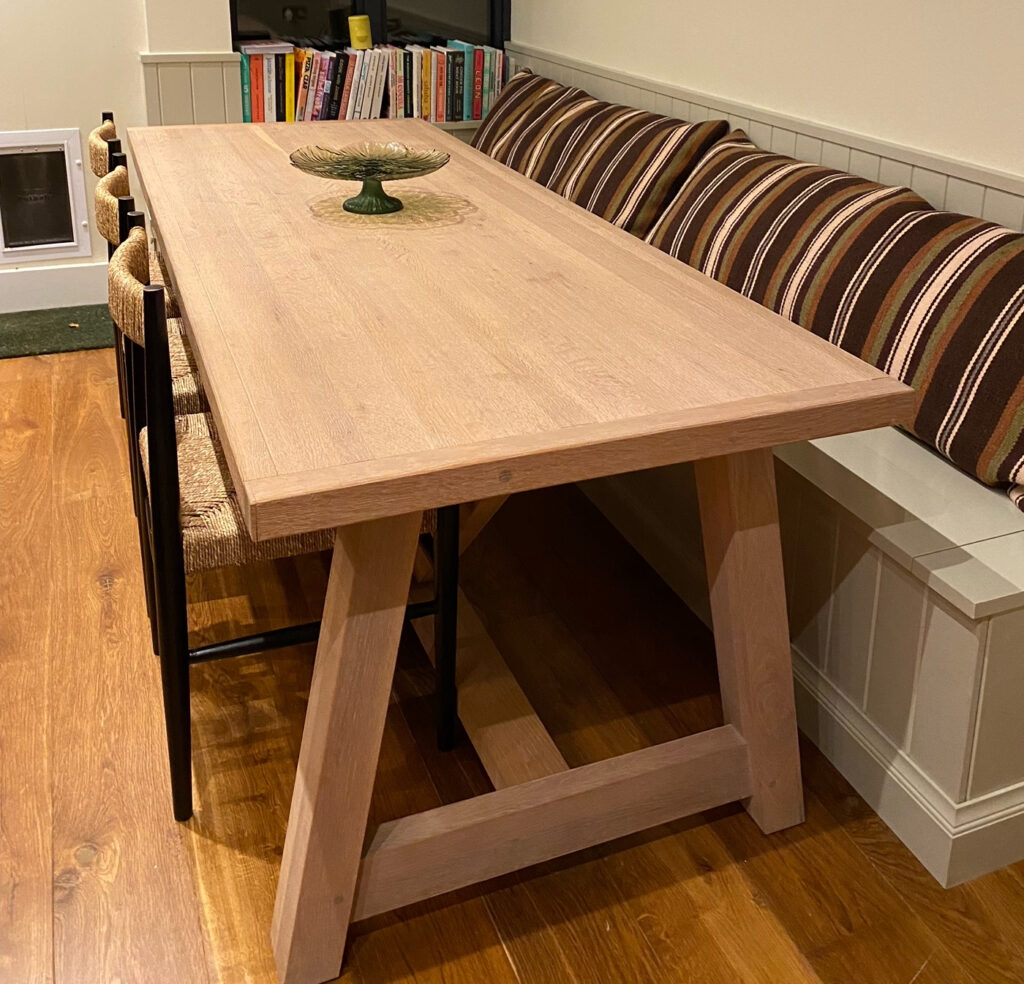
15. Remodelling
A remodelling project is when it goes beyond straightforward resizing. It can mean altering one of many aspects of a table’s design in order that it suits its new intended purpose. Remodelling can involve adjusting features, from fundamental parts like the top or legs through to adding elements such as drawers, shelves and so on.
The motivation for a remodelling project is often the desire to keep the core essence of a table but upgrade its usefulness and/or its appearance. It may be that the original table has a sentimental appeal or offers a practical benefit, such as being the perfect size and style for its environment. In either case we are here to implement any workable alterations to make it the ideal piece for the long term.
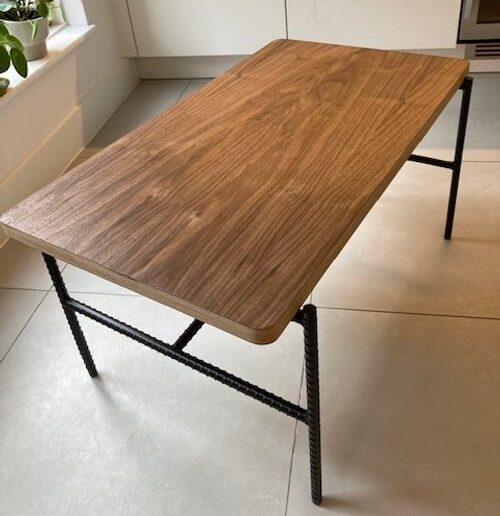
16. Add a bench
Creating a bench – or benches – to accompany a new or existing table may not strictly be a customisation, but it certainly can feel like one. Having a bench made to perfectly match a table can add a sense of completeness.
Custom made benches are a great practical addition as, compared to chairs, they can really maximise the seating space available.
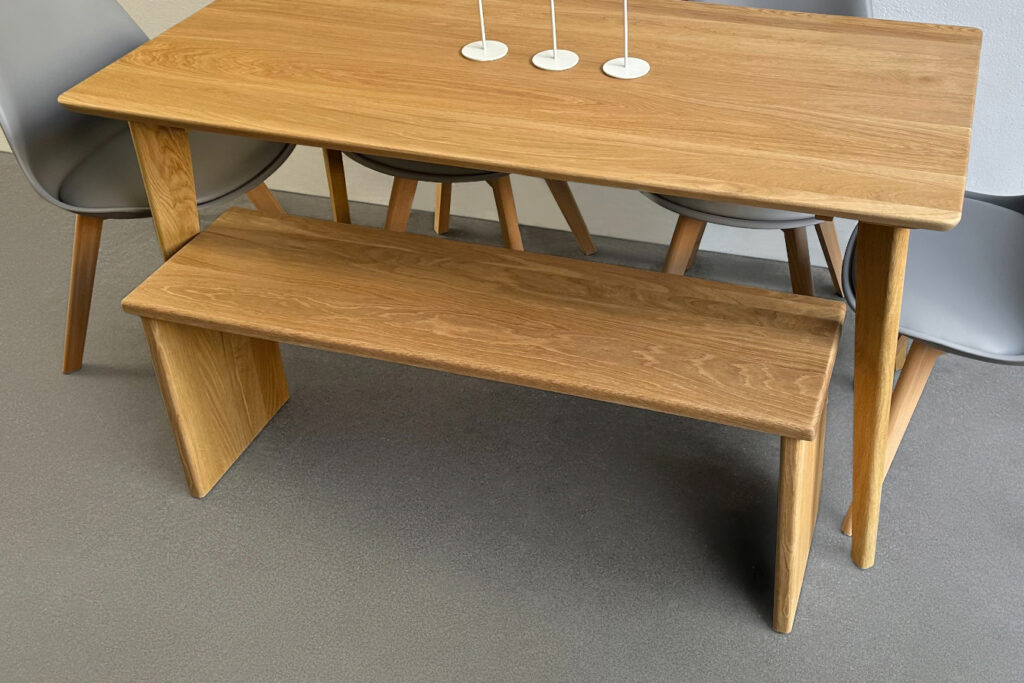
17. Accessorise
The option to add accessories that really suit the style of a table can be a real bonus from a design point of view. For example, creating a monitor stand or foot stool in the same material and style as the table can make the overall look more natural and cohesive.
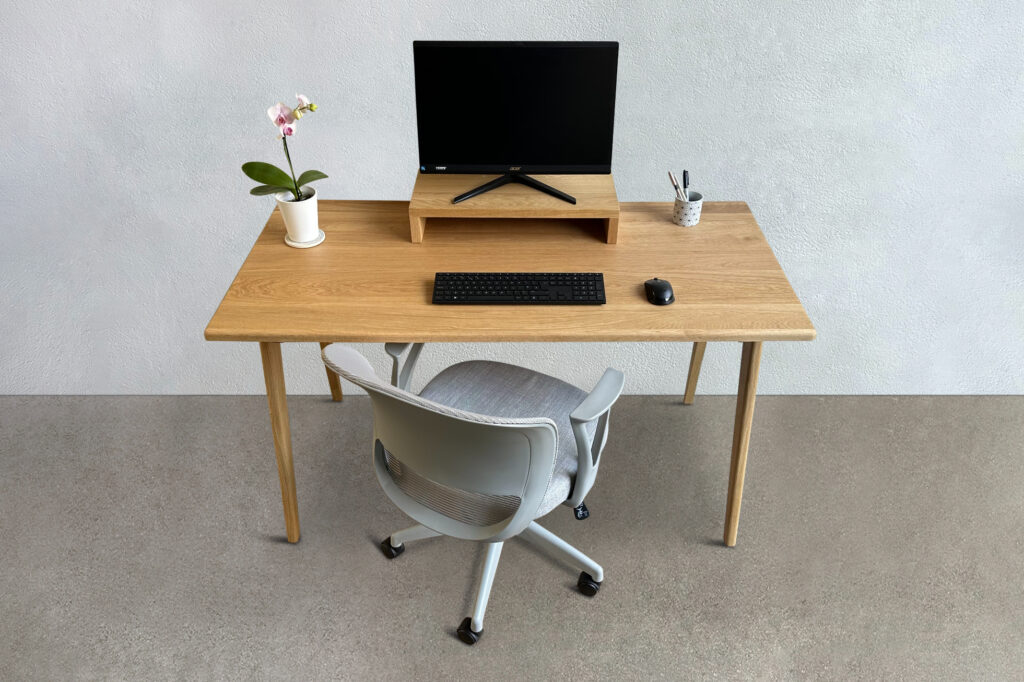
Other accessories could include serving boards/stands for dining tables or stationery organisers for desks. Just let us know what table accessory you have in mind and we will work to make it happen.
18. Storage solutions
Especially relevant for desks, good storage can be almost as important to functionality as the design of the main piece itself. After all, what’s the point in having a beautiful solid oak desk if you can’t see it under piles of paper and books?
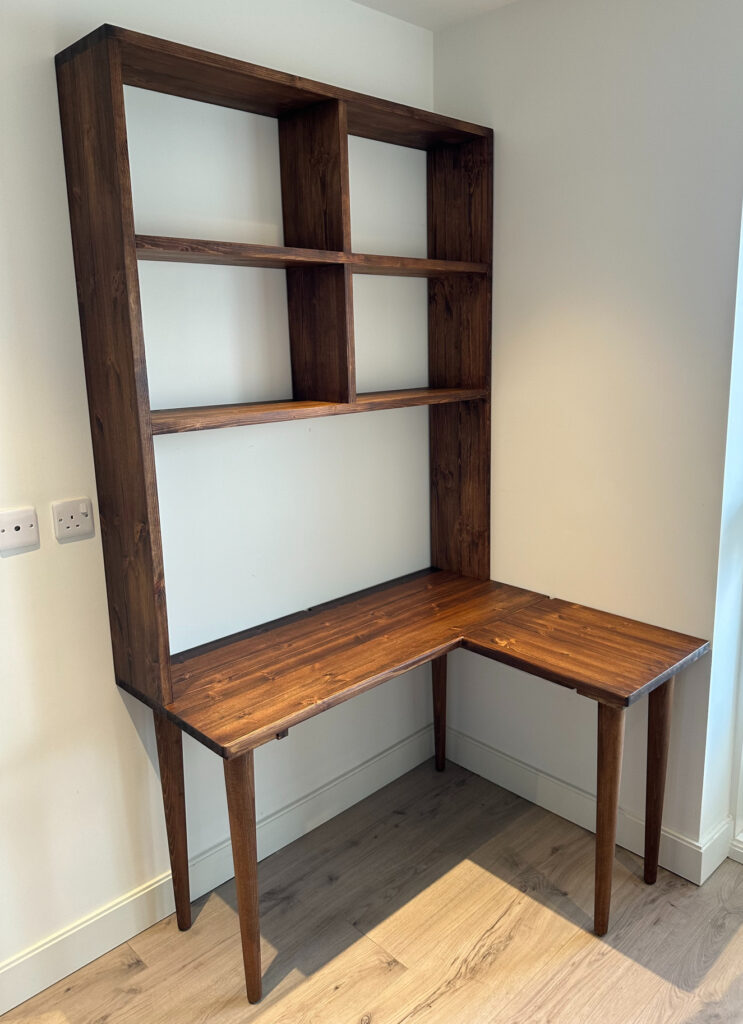
We can make drawers, matching shelves or cupboards either joined to the desk or freestanding to really help you enjoy your space uncluttered – a tidy desk is a tidy mind, as they say!
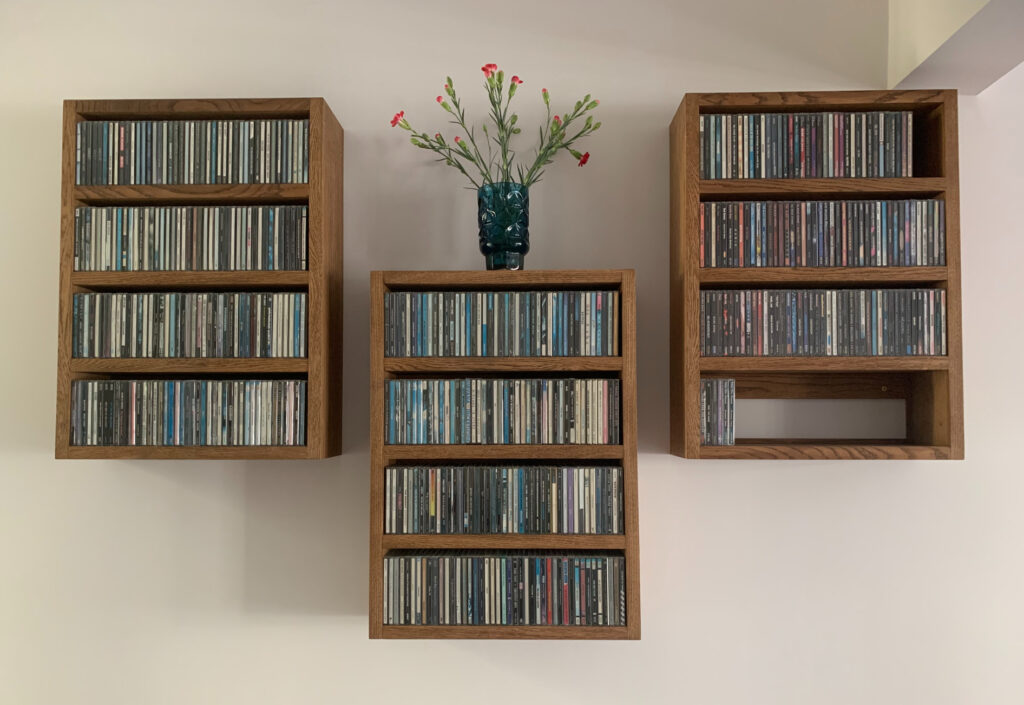
19. Straightening bars
It’s a fact of nature that the size of a piece of wood will change according to how much moisture it has absorbed from the air. On a humid day you could expect an item of solid wood to increase in size ever so slightly as it takes in microscopic droplets of water – and shrink when it it dries out. If there is nothing to hold it flat, a solid wood top may curl up – or down – at the ends as a result of this natural process.
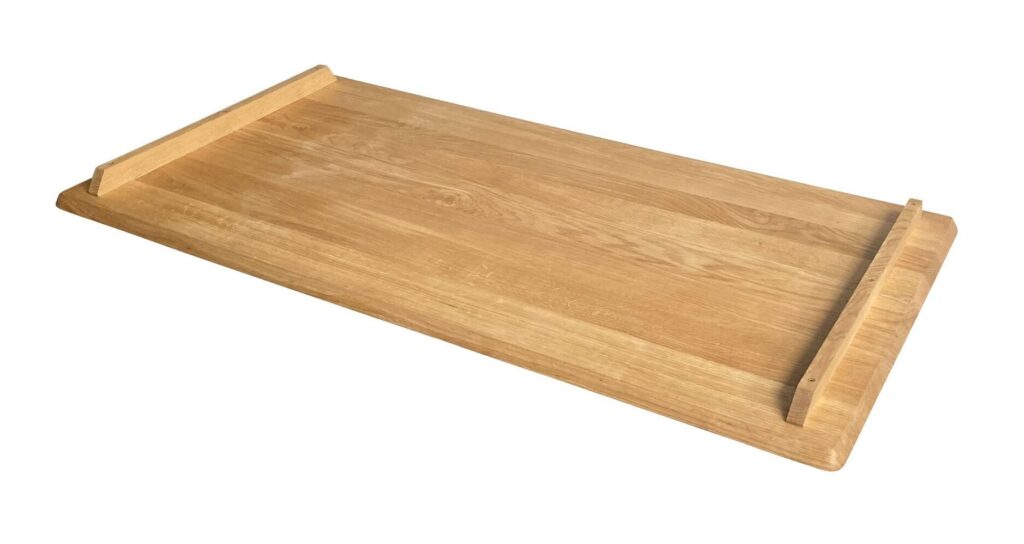
To combat this warping effect we always add what we call ‘straightening bars’ to the underside of the table top. On some of our products the bars are made from solid wood, and others have metal to do the same job. The wooden bars are typically 3-4cm deep which means they may be visible from a low angle, whereas the metal bars only sit around 5mm outside the top because most of the steel is recessed.
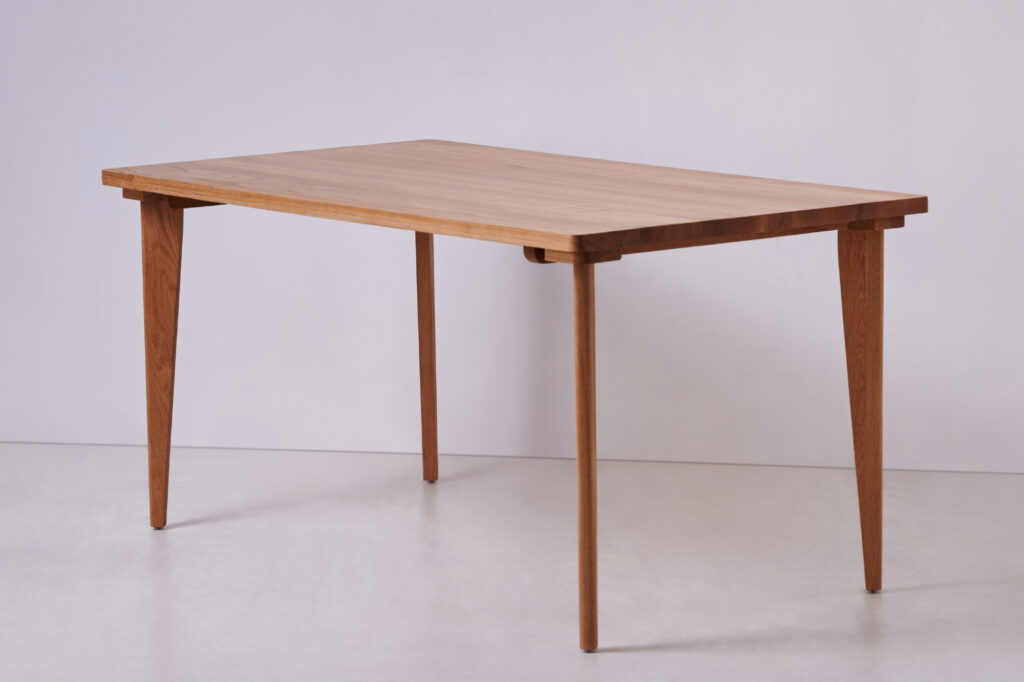
We think the wooden bars add interest and style to the tables where we use them, but if you want a minimalist look we can swap them for the metal alternative. Conversely, our tables with metal bars can be given the wooden option if that more organic and traditional appearance is appealing.
20. Table tops
Technically, this customisation is more of an enabling solution that helps customers create their own tables and desks with legs/bases they have sourced elsewhere. There is a huge variety of table legs/bases available online which customers may prefer to use as often this can be an overall lower cost option than buying a complete bespoke table.
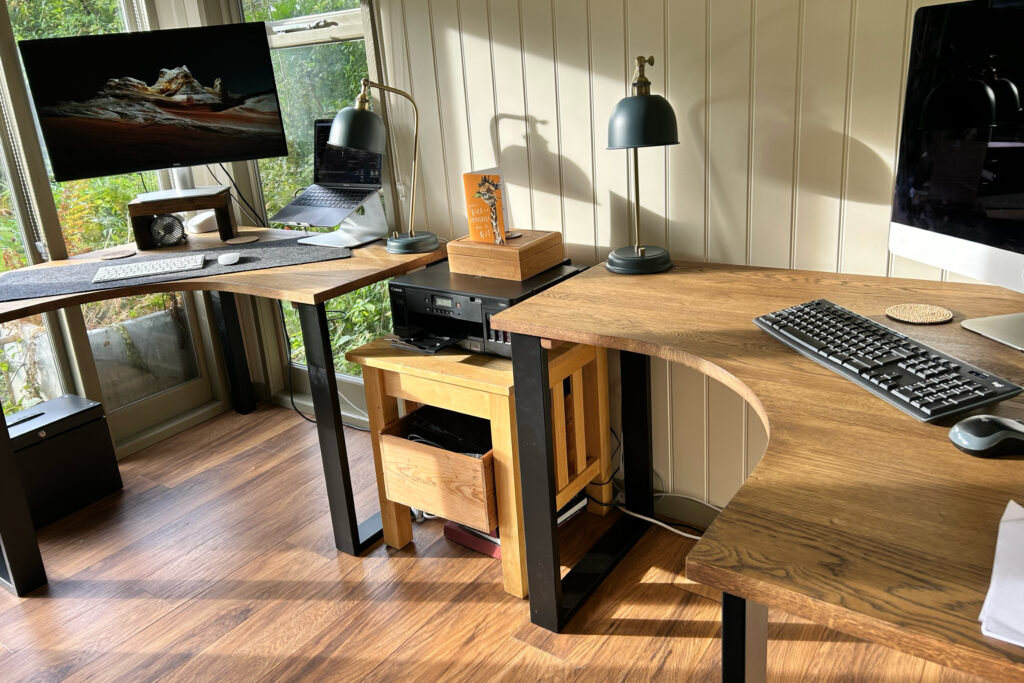
The same options for customising tables or desks – finish, edges, corners and so on – apply when buying a standalone top, so you really can design the perfect piece for your budget and needs.

Now you have a good idea of the many ways you can customise your Tablemaker products, let’s work together to create your ideal style.
